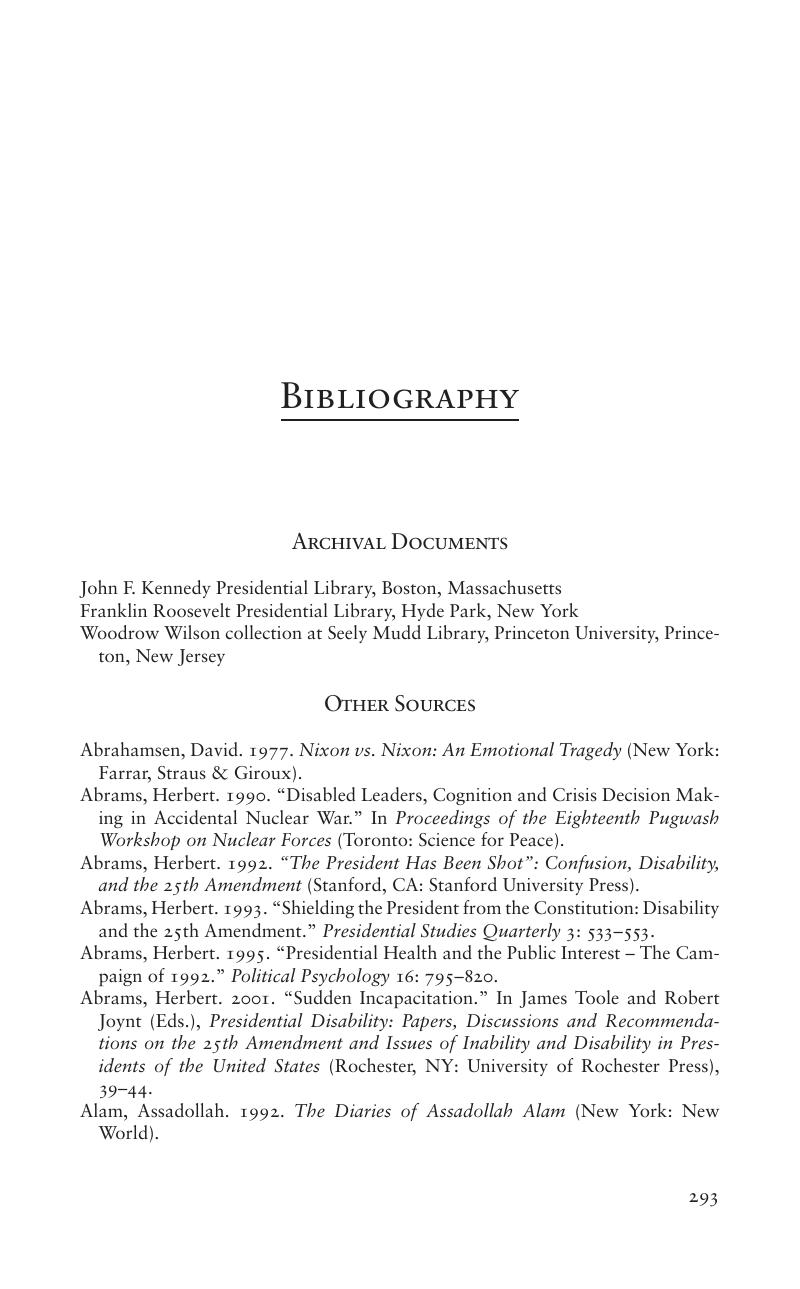Book contents
- Frontmatter
- Contents
- Acknowledgments
- 1 Introduction
- 2 Aging, Illness, and Addiction
- 3 The Exacerbation of Personality: Woodrow Wilson
- 4 Leading While Dying: Franklin Delano Roosevelt, 1943–1945
- 5 Addicted to Power: John F. Kennedy
- 6 Bordering on Sanity: Richard Nixon
- 7 The Twenty-fifth Amendment
- 8 Presidential Care
- Appendix: Foreign Leadership and Medical Intelligence: The Shah of Iran and the Carter Administration
- Notes
- Bibliography
- Index
- References
Bibliography
Published online by Cambridge University Press: 24 May 2010
- Frontmatter
- Contents
- Acknowledgments
- 1 Introduction
- 2 Aging, Illness, and Addiction
- 3 The Exacerbation of Personality: Woodrow Wilson
- 4 Leading While Dying: Franklin Delano Roosevelt, 1943–1945
- 5 Addicted to Power: John F. Kennedy
- 6 Bordering on Sanity: Richard Nixon
- 7 The Twenty-fifth Amendment
- 8 Presidential Care
- Appendix: Foreign Leadership and Medical Intelligence: The Shah of Iran and the Carter Administration
- Notes
- Bibliography
- Index
- References
Summary

- Type
- Chapter
- Information
- Presidential Leadership, Illness, and Decision Making , pp. 293 - 306Publisher: Cambridge University PressPrint publication year: 2007



